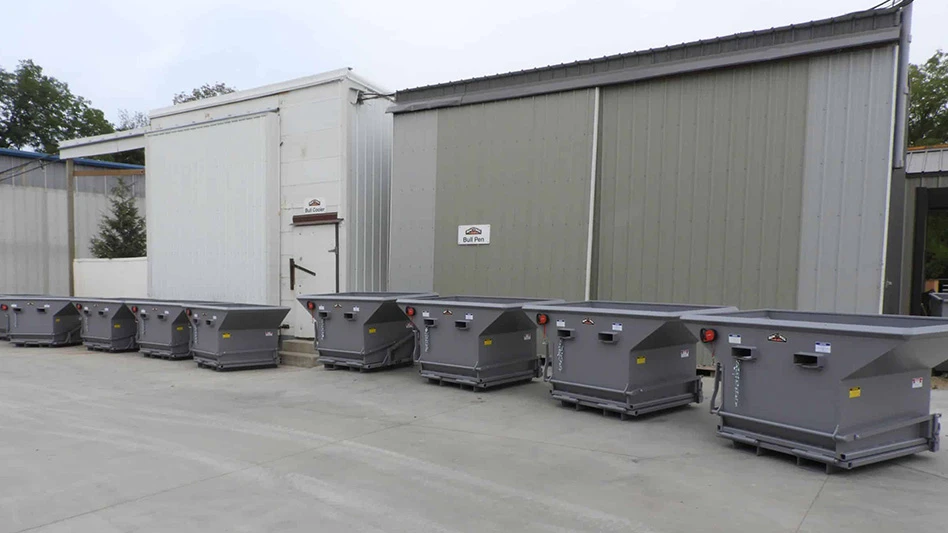As an insurance professional, I am a major proponent of promoting loss prevention. While I am sure no one would argue that it is best to avoid a fire, there is some comfort in knowing that your insurance coverage is adequate and that you are not just discovering the extent of your coverage at the time of a loss.
In the almost five years that I’ve had a significant interest in the records management industry, I’ve seen loss prevention, particularly relative to fire, as a recurrent topic in industry periodicals and at conferences. However, what strikes me, by way of its absence, is the minimal attention that seems to be paid to properly insuring a records management facility for the truly unique exposures that it faces. For this article, I’m going to focus on the one exposure I feel is most critical to understand to properly protect a records management facility.
INDECENT EXPOSURE
I was first exposed to the records management industry approximately 10 years ago when one of my longtime courier clients stumbled into the records management industry by simply storing, and at that time not yet managing, some boxes of old documents for a few of its customers. One thing led to another, and before too long my client realized that this additional revenue source had the potential to become quite lucrative.
While we were providing the company with an insurance program for both of its operations—courier and records storage—we hadn’t really done anything that much different. We were providing the company with Warehouseman’s Legal Liability, which is designed to insure the records center against loss or damage to the property of others while in the company’s care, and the plain vanilla business insurance coverage. As this business continued to grow, we also implemented some traditional business income coverage, which covers loss of business income as a result of damage that temporarily closes or limits your business.
Fast forwarding a couple of years, my client’s records management business had grown significantly. In light of its growth, my client had built a 50,000-square-foot, state-of-the-art records management facility. This event triggered a fresh, comprehensive insurance and risk management review. During this review, the exposure that really jumped off the page was business income. At the time my client opened its new facility, it had approximately 300,000 units in storage. The question was, what would happen from a loss-of-income standpoint, if, in spite of all the fire protection and security, there was a major fire? How would the business income insurance respond and would it be adequate?
LIMITS OF COVERAGE
Understand that the basic concept of business income insurance is to protect against loss of net income (net profit or loss before income taxes) that would have been earned or incurred, plus continuing normal operating expenses, including payroll, during the period of restoration. The actual loss payment will not exceed the limit of the policy. Basically, once the facility is rebuilt, the business income coverage ends. The premise behind the coverage ceasing at this point is that the business has been made whole again and can now operate as it did prior to the covered loss.
All of the business income coverage forms expand coverage slightly via an Extended Period of Indemnity (EPI) provision. In some carrier’s coverage forms a 30-day extension is automatic. Most carriers will offer, for additional premium, EPI’s ranging from 60 days to unlimited. A significant EPI helps, but you must remember that the claim still cannot exceed the applicable limit of insurance on the policy. Even with a significant EPI provision, you would have to contemplate and calculate out several years of potential lost income to arrive at a limit that is adequate. The fact is, traditional business income coverage, even with a significant EPI, often doesn’t offer adequate coverage for the records management industry.
Perhaps the best way to illustrate this point is an example where the traditional coverage does work well for a "normal business." Let’s take a basic, single-location manufacturing operation. Hypothetically, this operation has a fire that destroys three-quarters of its building. It takes 10 months to rebuild the building, install new equipment and replenish raw materials. The manufacturer has business income insurance, with a 60-day EPI provision, and it will take care of the lost profit and continuing expense for the 10 months the operation was down. The 60-day EPI helped as it took some time to get the operation ramped up to the production levels it was at pre-fire. Of course, I am assuming the limit of insurance the operation had in effect was adequate.
As you can see, this is pretty straight-forward example, and the coverage did exactly what it was supposed to do. Now, the manufacturer is ready to pick up where it left off.
Now let’s apply a similar scenario to a records management facility…The building gets rebuilt in 10 months, and racking, security, etc., have been installed. The operation is ready to go again. But, where are all the boxes that were there prior to the fire? Gone. The company’s hard work and future revenue potential (boxes) have been destroyed—They went up in flames!
The records management operation cannot just go back to its customers and get replacement units. Instead, the business has got to go out and solicit new customers (who, by the way, may have some concern about a facility that had a recent major fire). Of course, the old customers may come back or continue to use the operation, but how long before they have anywhere near the number of units lost in the fire? The answer is several years. Does the traditional business income coverage form, with an EPI of any length, get the job done? In a word, no.
Remember, regardless of the EPI, any claim cannot exceed the policy limit. How are you going to project out several years of net income with any kind of accuracy? Even if you are able to come up with a limit you are reasonably comfortable with, are you prepared to put up with a very long and complicated loss adjustment? Why should you?
BEYOND THE TRADITIONAL
A new product is available to the records management industry called Storage Legal Life (SLL) that is designed to eliminate the shortfalls of traditional business income insurance. This product has two coverage parts: Part A, Warehouseman’s Legal Liability, and Part B, Gross Income and Extra Expense.
Part A works similarly to most Warehouseman’s Legal Liability policies. It provides coverage that tracks with what you and your customer agree to via the Customer Storage and Service Agreement (i.e., $1 per box). Part B, on the other hand, replaces the traditional Business Income/Extra Expense insurance with what amounts to "life insurance on a box."
To illustrate how SLL coverage would work, here is an example:
•
Assume a facility that houses 500,000 boxes, or units.•
The average unit generates $6 annual revenue.•
The insured chooses to base coverage on a three-year period of lost revenue.•
$6 multiplied by 3 years equals $18 per unit, rounded up to $20 to allow for miscellaneous lost revenue and extra expenses.•
A fire damages 100,000 units.•
The insurance company sends in an adjuster to verify the 100,000 destroyed/damaged units.•
The insurance company issues a check for $2 million, less the applicable deductible.That is basically all there is to it. The insured company receives gross revenue for those damaged/destroyed units, to deploy in any way it determines.
The company may have a good long-term customer that had 5,000 boxes soaked by sprinklers that is pressuring the firm to restore the documents via expensive freeze drying, which can run up to $50 per box, or the client will move his other 20,000 boxes, regardless of the fact he’s agreed to $1 per box liability. Based on the loss settlement under the SLL policy, the records storage company could easily accommodate this customer and still be in a pretty good position relative to its future lost revenue.
For most exposures facing a records management facility, standard insurance policies and coverage can offer adequate protection, assuming the proper limits are chosen. However, the specialized service such companies provide to their customers creates a unique exposure for their businesses with respect to business income. It’s important to understand a company’s insurance program prior to a loss, but it’s even more important to know products are available that can provide adequate protection.
An operation wouldn’t set itself up for failure by using a picker that only extends 10 feet if it had 20-foot tall racking, so why would it continue to purchase business income insurance that comes up short when the operation needs it most? n
The author is senior vice president and branch manager for the Middleburg Heights, Ohio, office of the Oswald Cos. He can be reached at jice@
oswaldcompanies.com.
Latest from Recycling Today
- Autocar releases Smart Battery Cable to advance refuse truck fire safety
- PLASTICS launches Positives of Plastics website
- Impact Air Systems launches compact ZAC400
- PCA to shut down paper machines at Washington containerboard mill
- BMRA provides landfill guidance for UK shredder operators
- Fornnax high-capacity tire recycling plant
- EU introduces measures to secure raw materials, strengthen economic security
- US Steel to restart Illinois blast furnace





